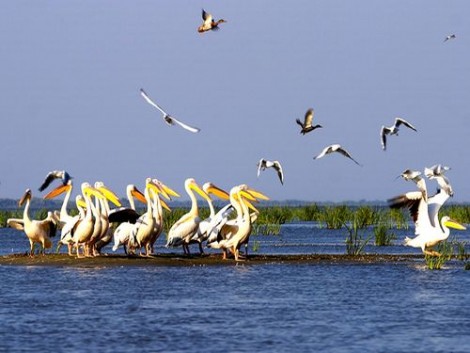Case Study
Evaluating the carrying capacity for visitor management in protected areas – Case study Danube Delta Biosphere Reserve
Contact name
Gabriela Cretu
Institution name
Danube Delta Biosphere Reserve
Region & country
Danube Delta - Romania
Summary
To know about the impact of tourism on species and habitats in the Danube Delta Biosphere Reserve (DDBR), like in all protected areas, is very important for a proper management. In all protected areas management the question ‘how much is too much?’ is not an easy one to answer.
Visitors can have a broad impact on natural, cultural and historical values. Impacts due to the increasing number of visitors and their pressure on tourist routes can lead to degradation/disturbance of landscapes and wild habitats.
The assessment of tourism activities impact in protected areas and the Evaluation of carrying capacity represent a necessary scientific support for visitors management, helping to ensure the sustainable conservation of natural heritage.

Background of the project
In order to achieve a proper visitor management, a study “Recreation and Tourism Zoning Strategy for the Danube Delta Biosphere Reserve” was elaborated in 2009 (Discover Eco Romania, Détente Consulting, WWF). The DDBR tourism particularities are mentioned in the Strategy Plan for Sustainable Tourism in the Danube Delta, elaborated by WES KennisCentrum Regionale Economie, in the Project Development of the potential for sustainable tourism in a Natura 2000 wetland area: Danube Delta case (2008).
These ideas were stressed in the Master Plan- support for the sustainable development in DDBR, a Chapter being dedicated to the tourism, that can produce big losses for the protected areas if it is not managed properly but that can also bring huge benefits.
According to DDBRA Management Plan, tourism development based on the carrying capacity of the reserve ecosystems is closely linked to the development of a monitoring system in order to have a clear evidence and control of the tourist’s flow.
Solution and actions taken
In order to establish the limits up to which the tourism development and infrastructure do not affect the carrying capacity of the Protected Areas, it was required a Study for the evaluation of the Carrying capacity which is used in the context of sustainable tourism. It is often proposed as a method to evaluate the intensity of tourist development and how much a tourist destination can support, taken into account the ecological, economical, and social characteristics of that destination.
Within DANUBEPARKS STEP2.0 project was elaborated a study “Evaluating the carrying capacity for visitor management in protected areas (Case study DDBR)“. This study included:
- description of the monitoring methodology
- recommendations for assessments in another area
The carrying capacity concept comprises not only ecological but also the visitor and socio-economic aspects. It integrates the proposal regarding the development of a sustainable transportation network inside Danube Delta Biosphere Reserve.
Other institutions or parties involved
The project DANUBEPARKS STEP2.0 was financed through the SEE Programme 2007-2013, and DDBRA implemented it as a partner.
The following institutions and organisations contributed to the development of the study:
- Association of Ecotourism in Romania (AER);
- Neusiedler See National Park, Austria on behalf of AER;
- Danube Delta Biosphere Reserve Authority;
- “Ivan Patzaichin- Mila 23” Association;
- Danube Delta National Research and Development Institute;
- World Wide Fund for Nature (WWF).
Results
DDBRA and Landkreis Neuburg Schrobenhausen partner, as a pilot, assessed their carrying capacities and integrate their gained know-how into a joint transferrable CARRYING CAPACITY TOOL, that is now available to all partners of the network.
DDBRA developed also a digital tourist handbook, in the form of an application for mobile devices, to lead visitors on the designated tourist routes and to provide necessary information. The App can be downloaded for free on Google Play and App Store.
Challenges
It must be taken into account environmental, social and economic indicators in such a way that the interest of all stakeholders and the area itself are well balanced and can progress.
Lessons learned
This monitoring system is unique for every Protected Area since they differ from one to another, from the Upper and Middle Danube to the Lower Danube Region. Based on the carrying capacity study, a partnership between the Protected Area, local authorities, and tourism stakeholders must be developed, including the coordination of visitors flows and therefore of the distribution of visitor pressure on natural habitats.
Contact name
Gabriela Cretu
Institution name
Danube Delta Biosphere Reserve